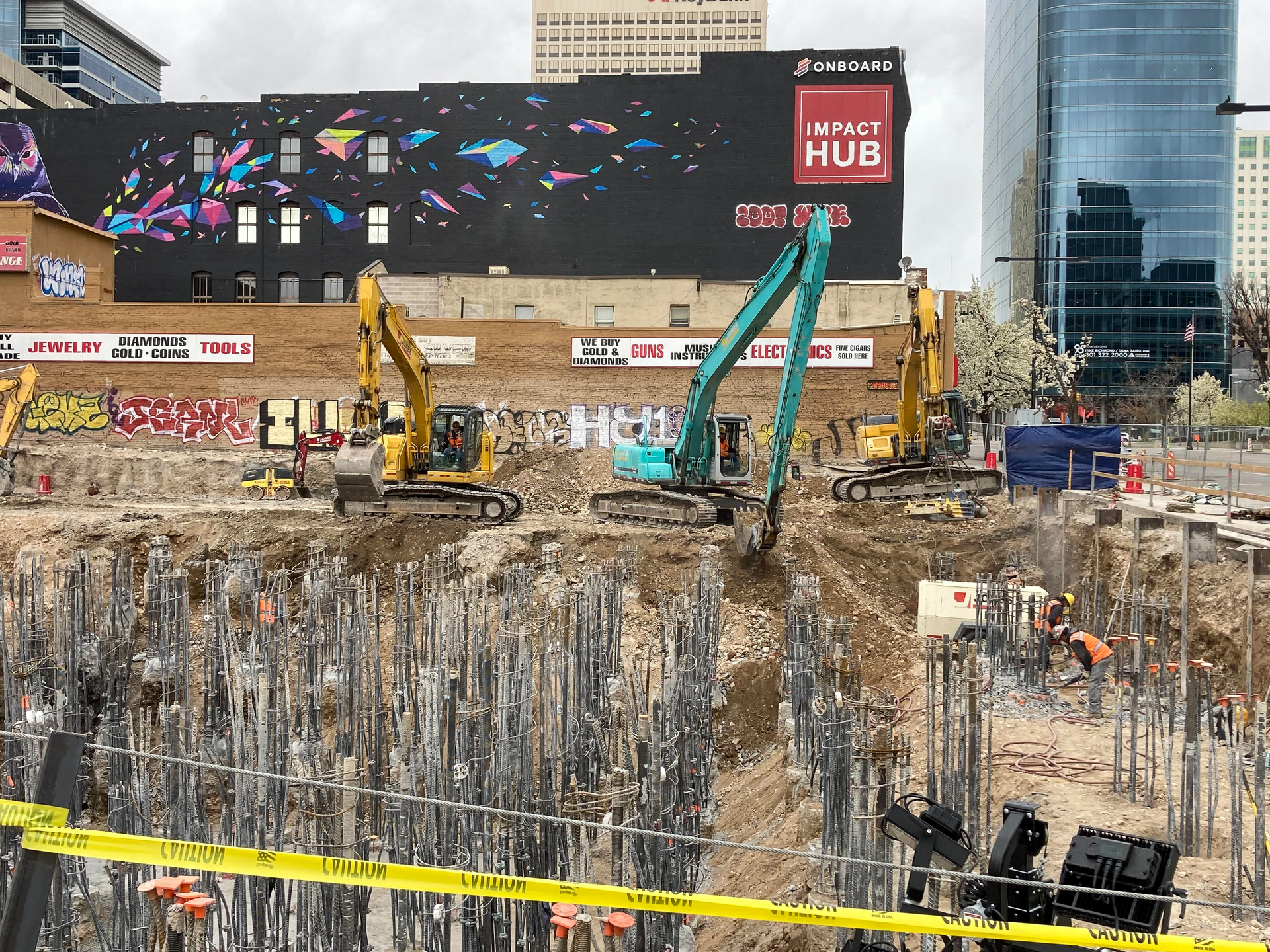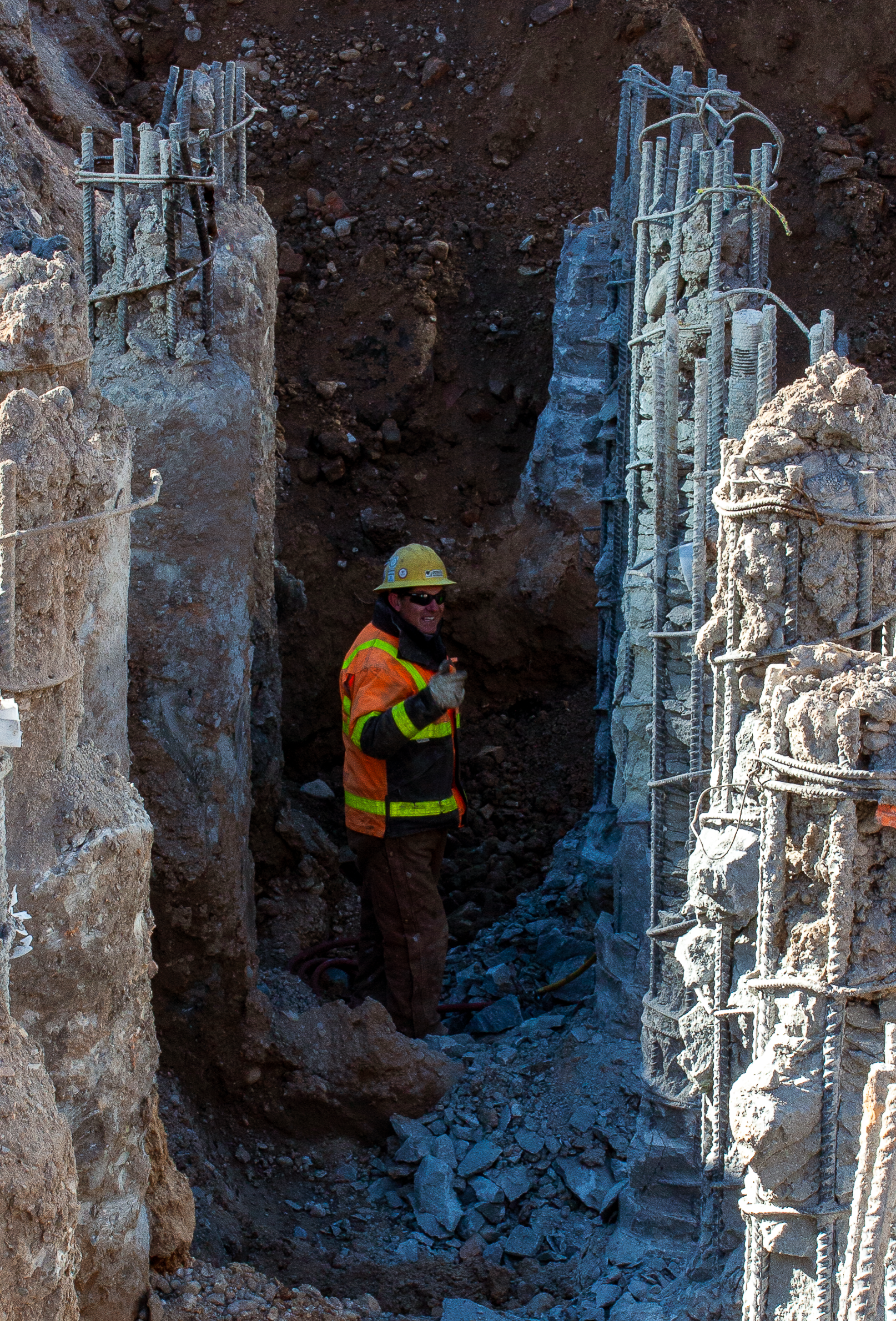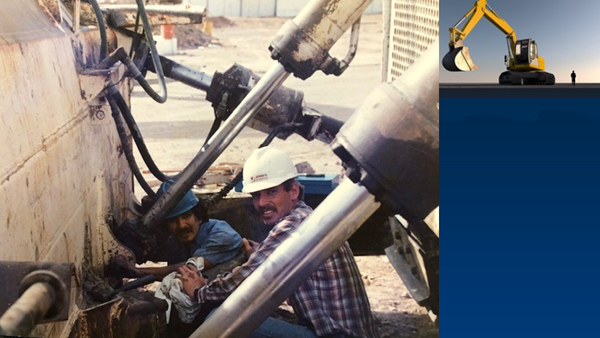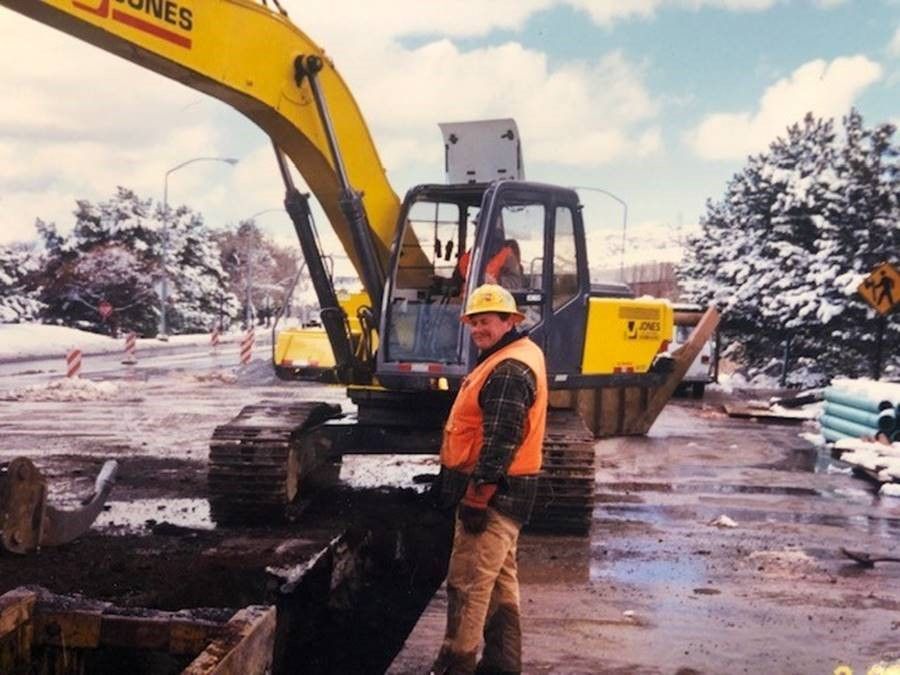Jones Excavating has established itself as a premier heavy/civil company in Utah, specializing in excavating, shoring, drilling, and deep foundation construction. By B.H. Wright
Bob Jones was an 18-year-old freshman at Utah Technical College in 1969, with a desire to study civil engineering, when his father, Paul, was partially crushed by a load of sand he was hauling in Midvale.
“He lived through it, but he could never work again,” said Jones, long-time President of West Jordan-based Jones Excavating. At the time, he was the third oldest of seven children and the oldest son in Utah at the time (older brother Bruce was on a church mission) and forced to take over his father’s business and become the breadwinner for the family, a lot he didn’t particularly like at the time. “That was the start of my [construction] career. I hated the business tremendously because we were using old equipment. You had to work in the winter with no heated cabs. I thought I was done [with construction] when I graduated.”
It took Jones some time to gradually learn the ins and outs of the industry, but he channeled his energies and natural talents into improving upon things his father never did, including investing money back into the company when things needed replacing. Paul grew up in the depression, said Jones, which fostered a mindset of scrimping and saving to the point of it being a detriment to business.
“We never bought a new truck tire, never bought new batteries, never bought brake parts,” Jones recalled. “There were days the air compressor was out, and we were out of work for a couple of weeks. It was a struggle [early on]. Once I got running the business and calling the shots, I started to like it. I love it to this day.”
Family Business “Runs Itself”
Jones, 71, is one of a handful of family members who have played essential roles in the firm’s success over many years and one of the three primary owners, including brother Mike, 67, Vice President, and first cousin Bernell Kirkman, 63, Secretary/Treasurer.
Kirkman worked one summer for Jones in 1982 while attending at Snow College—a septic tank project at Palisades State Park near Manti. He didn’t consider it a career opportunity at the time and transferred to Utah State University. After graduating in business administration with a minor in economics in 1985, Kirkman was invited to run the office.
“I talked him into coming back,” said Jones. “He’s been the best partner a person could ever ask for.”
“We were self-taught,” said Kirkman, proudly. “I think we’re successful, in spite of being a family business. It’s more about solving [employee] problems, and success follows.”
A slogging 80s economy offered the same challenges all contractors faced, yet Jones Excavating made significant progress during the decade, gaining a reputation as a company that could operate as both a general contractor and a subcontractor and developing strong relationships with other firms.
Jones mentioned a solid working relationship with Guy Wadsworth, President/CEO of Draper-based Wadsworth Brothers Construction, for many years, and the fact that “his self-confidence rubbed off on me,” he said. He talked about a specific meeting on a Salt Lake City Sewer District project that helped change his perspective on how to get work and influence people. “I came out of that meeting with a whole new attitude about people. They really want to work with you and help you out.”
Jones also established a policy of never going into debt—for any reason. “We have a principal to operate debt-free. I’ve never borrowed money,” he said. “We have money to buy new machines because we’re frugal.”
Other key executives include Paul Hammond, Executive VP/VP Drilling and Shoring, and Terrance Parson, VP Excavating. Other family members include Chris Jones (XXXXXX), a Foreman in Drilling and Shoring, Phil Knighton (XXXXXX son-in-law), Safety Manager, and Wade Kirkman (Bernell’s son), TITLE.
Jones said he’s enjoyed the everyday challenges, and praised his entire team for their incredibly hard work, loyalty, and will to innovate and improve techniques and practices.
“We’ve been pretty innovative over the years,” said Jones. “That’s a big reason for success.” He mentioned the firm’s innovation with shoring, including building custom machines by taking a backhoe and rebuilding the front end so it can drive sheet piles. “That took a few years to evolve,” said Jones. The firm has become proficient at pile driving/shoring the most difficult jobs imaginable, including working in high-water table areas, roads, railroad tracks, and other deep foundation work.
The company has two major divisions: Jones Excavating Co., and Jones Drilling & Shoring. Jones Excavating specializes in mass excavation/backfill, structural excavation, installing various water/utility lines (water, storm drain, sewer, etc.), and concrete/curb and gutter prep work.
Jones Drilling & Shoring excels at deep foundation work, drilled pier foundations, large diameter vertical drilling, mat and pier communication tower foundations, micro-piles, soil nails and tie-back anchors, shotcrete, earth shoring, and pressure grout applications.
The firm boasts 80 full-time employees, which Hammond said includes some of the very best in the excavation/shoring industry. The company had been running at about 100 employees, but “Covid reduced our forces. We’re no different than anybody else,” Jones said. “Everybody in our company is excellent. I would put our crews up against anybody. We have some young (talent) we’ve developed from their youth.”
“I’ll take them over anybody in the country,” added Hammond. “I can’t tell you how lucky we are. We know it, they know it, and we do everything we can to retain them.”
Jones, Hammond, and Kirkman all praised Mike Jones, Superintendent, as being perhaps the most influential person in the field, where the work happens. Mike is well-versed in all aspects of the firm’s services, with more than 40+ years of experience and a wealth of knowledge about projects across the state.
“Mike has been our big job super,” said Jones. “He’s as easygoing as they come. You would never think there is a problem on his job.”
For the past decade, Jones said he’s done a good job getting out of the way and letting others do their jobs. He has always installed confidence in his employees and buoyed them up during challenging circumstances. Jones said he’s “semi-retired” but insists that “I still have the final say.”
“The company runs on its own—I come around the shop when I need to fix something on my car,” he chuckles. “As long as employees are taken care of, I stay out of everything. I get involved if I think something is not fair.”
“Bob Jones has been an exemplary example of what it takes to run a successful construction company,” said Rich Thorn, AGC of Utah President/CEO, adding that Jones served on the AGC Board of Directors for two years as Secretary/Treasurer in 2007-08. “His company has a stellar reputation working in a number of different markets. Their success is well-deserved. Not many companies make it 75 years—Bob and his team should be proud of their accomplishments.”

































